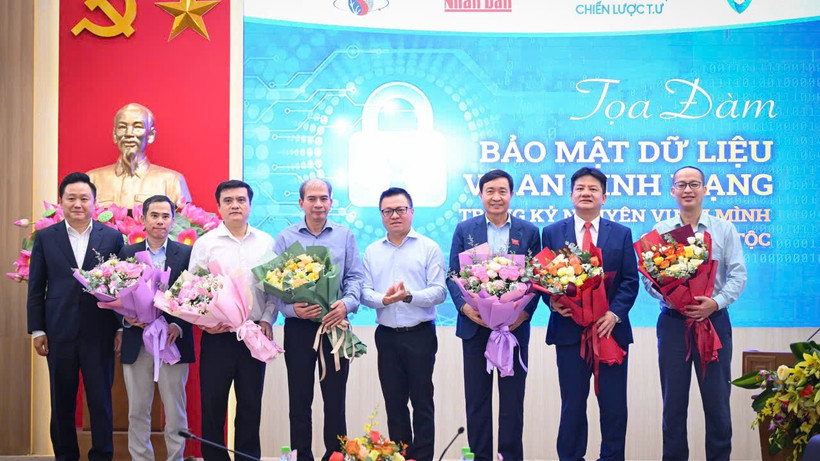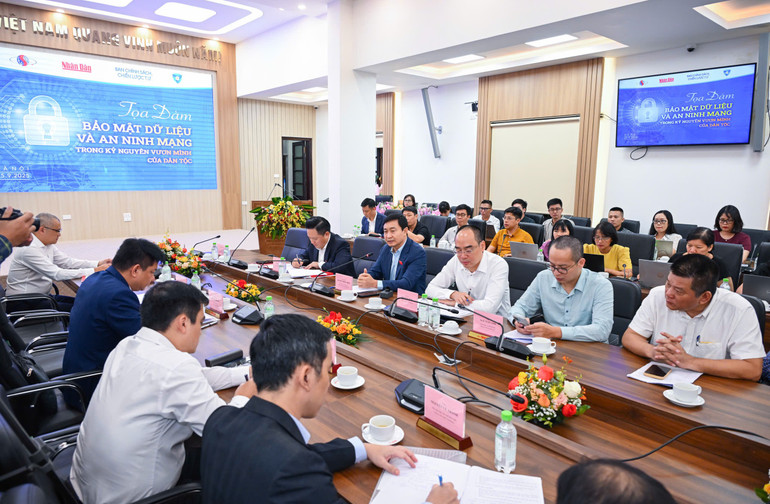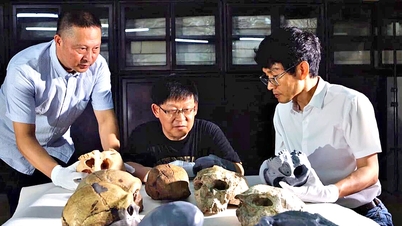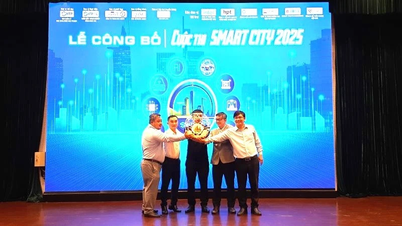
Existing risks in the digital age
According to Lieutenant General Nguyen Minh Chinh, Permanent Vice President of the National Cyber Security Association, the biggest risk today is large-scale cyber attacks targeting critical national infrastructure, businesses and people, with sophisticated methods and increasingly fast speed. Recently, there have been many cases of theft of state secrets, personal data and business data.

Besides, the spread of fake news and toxic information on digital platforms, taking advantage of artificial intelligence to spread quickly, also causes public confusion and affects the reputation of leaders.
High-tech criminal activities such as fraud, data trading, and even drug and weapon trafficking in cyberspace are also increasingly complex.
Mr. Chinh emphasized that the legal system on cyber security has been formed but has not kept up with the speed of technological development. Awareness of a number of officials, businesses and people is still limited, creating loopholes that are easily exploited.
The domestic technology infrastructure is not synchronized and depends heavily on imported solutions, making the risks even greater.
Security by design and the role of public-private partnerships
From a business perspective, Mr. Nguyen Le Thanh, Founder and Executive Chairman of Verichains Security Company, believes that the approach needs to change towards not just building the system and then protecting it, but designing security from the beginning.
Every system has a life cycle, today it is safe but 1-2 years later a new vulnerability may appear. Therefore, it is necessary to assume that an incident will occur and design so that the damage is minimal, Mr. Thanh affirmed.

Mr. Thanh emphasized the principle: “Do not store unnecessary sensitive data, separate data for external use from important data stored internally. When forced to share, only provide the minimum level.”
Above all, we must change the mindset of designing safe systems from the beginning, instead of only looking for protection after they are in operation.
At the national level, he believes that public-private partnerships are key. The state cannot handle all risks on its own, while private enterprises often face real-life incidents directly, thus gaining experience and updated solutions.

Sharing information and coordinating early will contribute to strengthening the capacity to protect cyber security. At the same time, Vietnam needs to encourage the development of domestic security enterprises to gradually master technology and reduce dependence on imported products.
Large enterprises are also effective human resource training environments, helping engineers accumulate practical experience instead of just theoretical knowledge.
“Training only provides basic knowledge. To have good experts, they must work in real businesses and on large projects to practice,” Mr. Thanh analyzed.
Data and digital assets: Strategic resources to control
Regarding data, Mr. Nguyen Le Thanh emphasized that it is necessary to classify and identify important data for protection. Collecting and storing too much leads to great risks when an incident occurs. He recommended only keeping necessary data, deleting information that is no longer valuable after processing, and separating important data from external connection systems.
In the digital asset sector, the State’s recognition and piloting of trading floors is a positive sign. However, strict regulations with large capital requirements make it difficult for domestic enterprises to participate, leading to many blockchain projects having to limit Vietnamese users.
According to Mr. Thanh, the policy needs to aim at a dual goal: controlling risks such as money laundering and terrorist financing, while encouraging innovation and creating an open environment to attract investment. If too tight, the policy could become a step backward, hindering the development of this potential sector.
Source: https://nhandan.vn/an-ninh-mang-viet-nam-truoc-suc-ep-moi-thach-thuc-va-loi-giai-tu-chuyen-gia-post910677.html




![[Photo] Students of Binh Minh Primary School enjoy the full moon festival, receiving the joys of childhood](https://vphoto.vietnam.vn/thumb/1200x675/vietnam/resource/IMAGE/2025/10/3/8cf8abef22fe4471be400a818912cb85)


![[Photo] Prime Minister Pham Minh Chinh chairs meeting to deploy overcoming consequences of storm No. 10](https://vphoto.vietnam.vn/thumb/1200x675/vietnam/resource/IMAGE/2025/10/3/544f420dcc844463898fcbef46247d16)


















![[Photo] Students of Binh Minh Primary School enjoy the full moon festival, receiving the joys of childhood](https://vphoto.vietnam.vn/thumb/402x226/vietnam/resource/IMAGE/2025/10/3/8cf8abef22fe4471be400a818912cb85)
![[Photo] Prime Minister Pham Minh Chinh chairs meeting to deploy overcoming consequences of storm No. 10](https://vphoto.vietnam.vn/thumb/402x226/vietnam/resource/IMAGE/2025/10/3/544f420dcc844463898fcbef46247d16)







































































Comment (0)